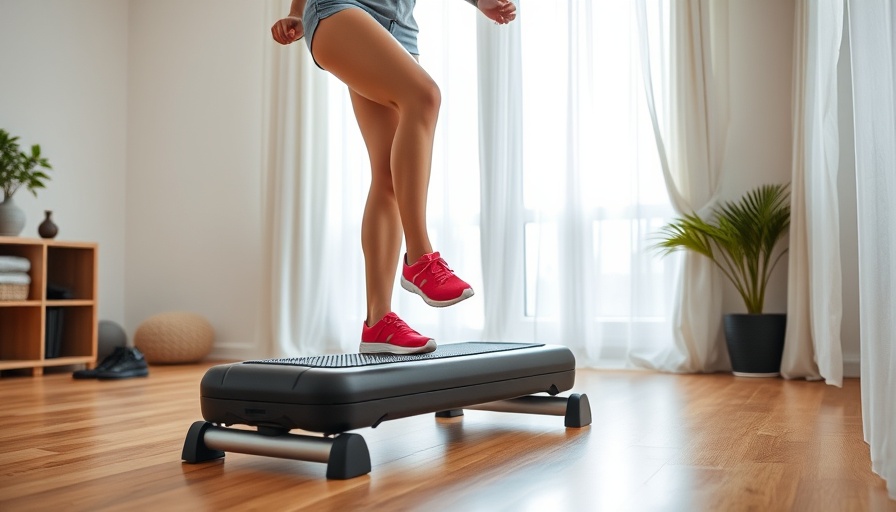
Why FB30 Round Five Is Right for You
Fitness programs can often seem overwhelming, especially for those of us managing busy schedules. Enter FB30 Round Five, a streamlined approach designed to fit perfectly into modern lifestyles. Each workout clocks in at about 30 minutes, making it an ideal choice for anyone looking to balance fitness with other commitments, especially members of the SDA faith community looking to prioritize health without sacrificing too much time.
In 'FB 30 Round 5 - Dig Deeper,' Tasha introduces us to the FB30 Round Five program, showcasing its benefits and structure, which prompts us to analyze its fit for our busy lives and community values.
Three Key Benefits of FB30 Round Five
The program is built upon three significant advantages that cater to its participants:
- Building Lean Muscle and Burning Fat: The structured workouts focus on developing lean muscle mass while effectively burning fat, ensuring that participants not only boost their metabolism but also achieve a toned physique.
- Mindful Movement Efficiency: The compact format encourages individuals to be intentional and efficient with their movements. As a member of the SDA faith community, you might appreciate how this approach doesn't just enhance physical conditioning but aligns with the values of mindfulness and purpose in our actions.
- Enhancing Self-Efficacy and Enjoyment: Committing to just 30 minutes a day can feel much more achievable than longer workouts. This accessibility fosters a sense of accomplishment, which is crucial for maintaining motivation and enjoyment in physical activities.
Understanding the Structure of the Program
FB30 Round Five extends over four weeks, comprising six workouts each week, with a seventh day dedicated to rest. This structured balance is not only crucial for physical recovery but also aligns with the Sabbath observances familiar in the SDA community, allowing participants to find spiritual rest alongside their physical commitments.
How Community Engagement Enhances the Experience
A noteworthy aspect of FB30 Round Five is the community interaction it encourages. Participants are prompted to share feedback and ask questions, fostering a support network among fellow members. This online connection can be particularly beneficial, enhancing the experience through shared struggles and successes, mirroring the communal spirit emphasized in faith. It’s essential to stay connected, whether through social media or local meet-ups, to celebrate progress and motivate each other.
Cultivating a Culture of Health and Wellness in Your Life
Engaging in a fitness program like FB30 Round Five not only boosts individual health but also cultivates a culture of wellness within the SDA community. Health has always held great importance in our spiritual teachings; prioritizing fitness underscores our commitment to caring for the body as a temple.
Practical Insights to Maximize Your Experience
To make the most of FB30, consider these actionable insights:
- Set clear, achievable goals for each week to measure your progress, whether that means increasing weights or mastering certain moves.
- Listen to your body and adjust the intensity as needed. Self-reflection on your energy levels can lead to a more enjoyable workout experience.
- Engage with others online or in your local church group to share your experiences and tips, enhancing both accountability and camaraderie.
Addressing Common Misconceptions
It’s often a misconception that shorter workouts are less effective than longer sessions. However, the FB30 Round Five program demonstrates that consistency and intentionality can yield remarkable results. By focusing on quality over quantity, even busy individuals can fit significant benefits into their routines.
Tools and Resources for Success
In addition to the workouts, consider leveraging various tools that can enhance your fitness journey. Fitness tracking apps, community forums, and wellness blogs are great ways to stay motivated and informed about your health. Furthermore, incorporating nutrition guidance from credible sources can give you a well-rounded approach to health, balancing both exercise and diet.
Conclusion: Embracing Health through Fitness
Engaging with the FB30 Round Five program reinforces how a balanced commitment to fitness can harmonize with your personal life and spiritual beliefs. The blend of intentional workouts not only serves to build physical strength but encourages a deeper connection to one's health narrative. By embracing this program, you are taking a crucial step towards a healthier and more fulfilling life in accordance with both fitness goals and faith values.
Ready to get started? Explore FB30 Round Five and see how it aligns with your lifestyle and beliefs. Remember, taking action towards better health not only benefits you but can uplift your entire community.
 Add Row
Add Row  Add
Add 




Write A Comment